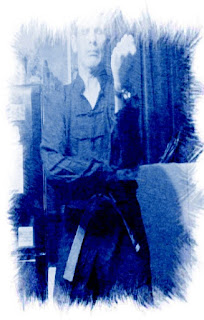I promised my son I would do another Monday night training session, as he gets to train with the adults as well if we do that. As it is half term, seemed like the perfect time to do it. as there is grading next weekend for at least one of our Dojo, it was always going to be an attention to detail session.
After the warm up and formal opening, including Mokuso (silent thoughts, a technique I find useful in real life), we started with Kata. We did all the Naihanchis and all the Pinans, and got to watch Passai Sho (black belts only). Everyone got to do the step by step versions of the Katas, then performance up to what they know. I felk confident enough to perform up to Naihanchi Nidan this time. My son absolutely loved it, as he had never gone past Pinan Shodan before😊😊.
After Kata,we went on to fundamentals - punches (jodan, chudan, gedan) , receiving techniques (jodan, chudan gedan) , kicks (mae, yoshiro, yoko, mawaishi geri), followed by tsuki, shuto and uke. As with the Saturday lesson, I tried to do as much of this as possible fully, the only element I held back on was the quantity of "tsuki" in the generic section, so I could complete the "uke" section. Currently the last elements aren't in our grading syllabus, but that might change, so it is important to practice all of them.
After that we went through all of the kihon katas, done both right side and left side, 20 in total done this way. The grading syllabus only includes the right side, so this is the first time I had performed any of them on the left hand side 😊😊. I am gradually becoming more familiar with them, but get a little muddled on the middle ones. To help me out, I went over them with my Sensei to document them for an aide memoiure. Below is the full documentation of our kihon katas for the first time by me:
Kihon Kata
Shodan
2 punch combination, Mae Geri
Nidan
Mae Geri, 2 punch combination
Sandan
2 punch combination, Mawashi Geri off front leg
Yondan
Mawashi Geri off front leg, 2 punch combination
Godan
Right Mawashi Geri (land in front), left Mawashi geri (land in front), reverse punch, jab.
Rokudan
Ashi uke, jab, cross, Mawashi Geri
Nanadan
Mae Geri (land in front) right jab, back kick
Hachidan
Mae Geri (land in front), back kick, reverse punch
Kyudan
Shuffle, backhand forehand punch, shuffle, backhand forehand punch, right then left mawashi geri, spinning kick
Judan
Shuffle, backhand forehand punch, shuffle, backhand forehand punch, right then left mawashi geri, hisa geri
I definitely favour the left hand side versions, being left handed, but I will get there.
After that, we had a couple of short bouts of light to medium kumite. The first was punches and kicks, and the seconds was kicks only. At the end of the first session, I had a bit of a panic as I had taken at least one punch to the ribs, and landed a kick on a block, catching an older bruise. With the pain and ragged breathing, it gave me a fright, but I managed to shake it off and rejoin in the kick bout, taking back over from my Sensei, who had filled in to allow my training partner a full go.
All in all, another enjoyable lesson 😊😊😊😊 Thank you very much to my Sensei, son, patient training partner and other dojo members for putting up with me as I plod along.🙏














